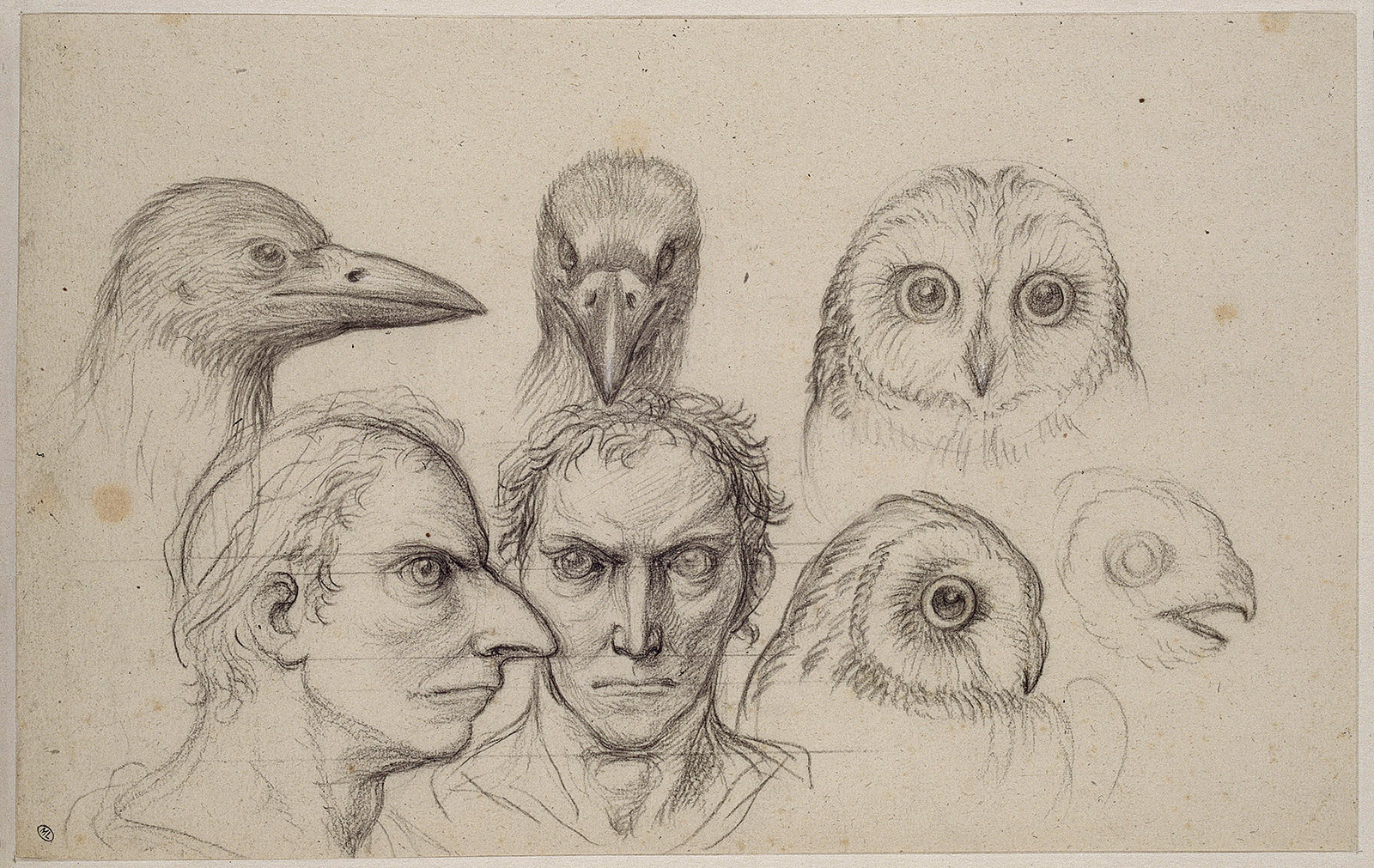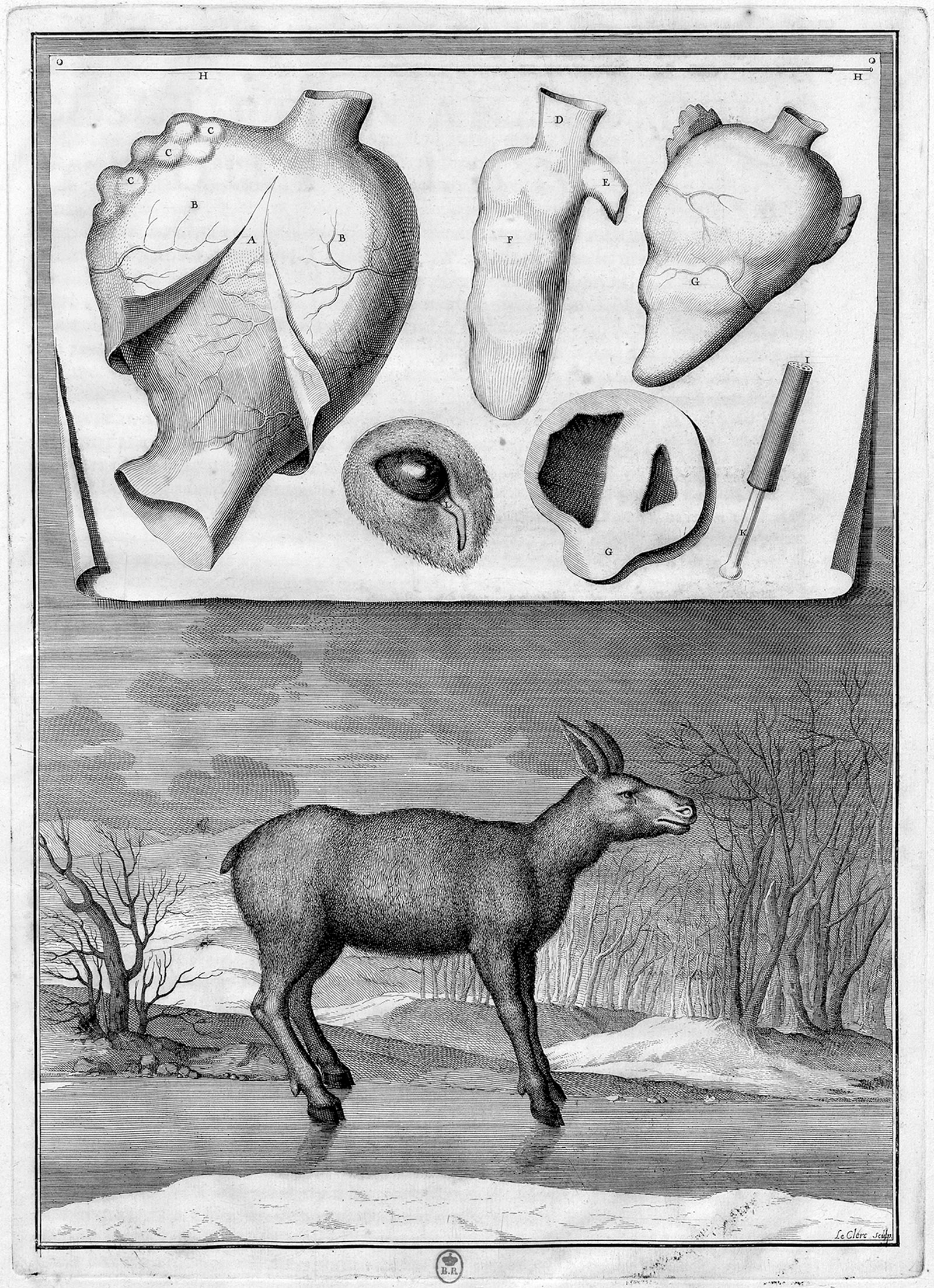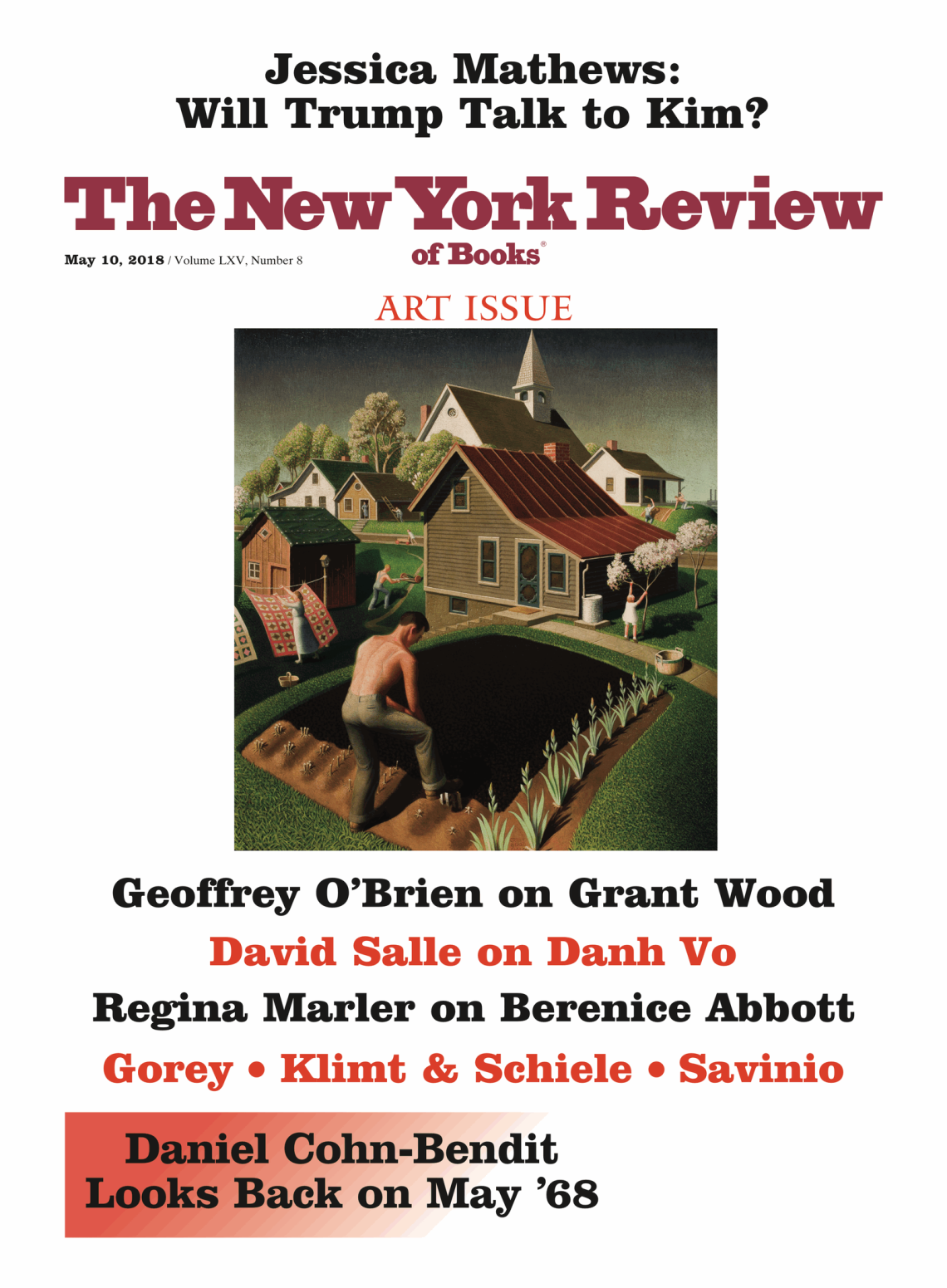Humans are animals, but humans have long insisted on their superiority over other animals. In the first systematic effort to explain the relation of humans to other animals, Aristotle established distinctions that have endured for centuries: some animals have memory, but only humans have history; animals have voices, but only humans have speech; animals perceive pain and pleasure, but only humans have a sense of good and evil. Humans therefore uniquely have morals and politics. Although the Greek philosopher admitted that a human could become “the most unholy and the most savage of animals, and the most full of lust and gluttony,” the order of nature, he insisted, put humans on top. Nature “made all animals for the sake of man,” for food, clothing, and whatever else we need.
In 1973, when Peter Singer raised the flag of animal liberation in these pages, he helped galvanize an animal rights movement that over the decades since has challenged the presumption of human dominion over animals. Aristotle’s distinctions have not lost their salience; research in fields ranging from evolutionary biology to linguistics seeks to refine and even redefine the differences between human and other animal systems of communication. Most at issue, however, are the consequences to be derived from these differences. Aristotle minced no words:
Where then there is such a difference as that between soul and body, or between men and animals…, the lower sort are by nature slaves, and it is better for them as for all inferiors that they should be under the rule of a master.
Domination is the nub of the problem: Do humans have unlimited rights over animals, and if not, what are the grounds for limitations on human dominance?
The answers to these questions are now the subject of furious debate, but one thing is certain: the animal question is popping up in places where it was hardly ever posed before, such as English literature, art history, political theory, and history. One sign of this burgeoning interest is the publication last year of The Oxford Handbook of Animal Studies. This useful volume is not a primer on how to conduct laboratory experiments on mice, rats, birds, dogs, etc. It offers instead an overview of the different kinds of approaches now developing, from considering animals as reflexive thinkers to more familiar debates concerning the ethics of animal food production and zoos. If animal studies seems too tame, a leap can be taken to “critical animal studies” or “post animal studies,” whose proponents argue against capitalism and for veganism, as well as for the complete liberation of nonhuman animals.
Whatever one thinks of this dizzying rush to the nec plus ultra, animal studies are here to stay. Although meat consumption is not about to disappear (beef consumption in the US is declining slightly while poultry consumption has increased threefold since 1960), concerns about methods of raising and slaughtering “livestock” have become more widespread, as have objections to the use of animals for laboratory experiments. Animal studies need not be programmatically attached to specific policy options, but they can help illuminate the choices we make and have made in the past, not just about what we eat and wear or which animals share our beds and board, but more generally about how the human use of animals has changed the landscape and humans themselves. At the very least, and leaving aside the question of animal agency, animal studies reminds us that consideration of animals, as Aristotle discovered long ago, affords a unique perspective on many things human.
In 1668: The Year of the Animal in France, Peter Sahlins does not pretend to offer policy prescriptions, but the current issues do inform his treatment of Louis XIV’s France, which he sees as offering an animal moment similar to our own. In 1668, animals were suddenly everywhere, in the king’s new collection of them at Versailles but also in spectacles, tapestries, fountains, poems, fables, and political and philosophical treatises, not to mention scientific experiments. In the service of his argument, Sahlins marshals an extraordinary array of maps, engravings, and paintings. Animals appeared in so many settings, he argues, because they had become crucial to the ways that humans thought about themselves.
The new conception of animals did not bode well for them, however, since it led to their “generalized devalorization.” In contrast to the Renaissance defense of the “happy beast” as having some form of understanding and even potential moral superiority to humans, what Sahlins calls “Classical naturalism” effectively bestialized animals, stripping them of any semblance of reason or understanding. Ironically, even while animals became thereby incommensurable with humans, humans were now seen as threatened by a potential beast within, that is, madness and uncontrolled passions.
Advertisement
Descartes has often been blamed for the devaluing of animals because he considered them automatons, or machines without self-awareness. Although he regularly practiced vivisection, he proved ambiguous on the subject of animals feeling pain. His followers, in contrast, went straight for the jugular. One of them wrote that animals “eat without pleasure, cry without pain, grow without knowing it.” In this view, animals experienced pain but did not feel it. Sahlins resists placing the whole burden of blame on Descartes, but it is inevitable that the philosopher plays an outsized part in his account. Cartesian mechanistic philosophy dethroned Aristotelianism and in the process established an even starker division between humans and animals. Not surprisingly, then, Sahlins argues that Descartes’s views on animals, though first published in 1637, only prompted serious public debate many years later, in 1668.
The choice of 1668 is not arbitrary and has its advantages. Choosing a single year effectively draws attention to the connections between absolutist politics, mechanical metaphysics, and artistic theory and practice. In that sense, Sahlins’s account is a model of what can be accomplished by cultural history, in particular by retrieving meanings lost in the specialization of university disciplines. The royal menagerie is an obvious starting point, since its viewing pavilion was the very first building constructed at Versailles, the ultimate symbol of Louis XIV’s absolutist style of rule. Although the pavilion took shape in 1664, four years were required to fill the courtyards with a largely avian crowd. Many birds were immobilized by clipped wings, a perfect metaphor for Louis’s endeavor to domesticate his previously headstrong nobles. An occasional deer, camel, or even bear could no more compete with the “royal bird,” the crown-crested crane, than nobles could match Louis, who made himself the star attraction at court festivals. The bigger animals placidly carried actors on their backs in allegorical pageants.
Like any good teacher, Louis believed that repetition ensured learning. Visitors to the menagerie viewed birds and rare animals through windows, but on the walls they could see a series of forty-six paintings commissioned in 1668 from the Flemish animal painter Nicasius Bernaerts. Although known for his renditions of nature red in tooth and claw, here the artist presented the creatures in supposedly natural bucolic settings. Serving as moral exemplars, these depictions still resonated with the Renaissance view of “theriophilia” (love of animals).
Two of the most prominent writers of the time, the novelist Madeleine de Scudéry and the poet Jean de La Fontaine, described the civilizing effect of the graceful, delicate birds in their accounts of the menagerie. Yet even while claiming to pay homage to the king, both writers got in their digs, in Scudéry’s case by referring to the cranes as chickens. In 1668 La Fontaine published the first volumes of his famous animal Fables, which many subsequently read as coded criticisms of the king and his court. Still, the days of staged animal combats were disappearing; paintings, engravings, and even amateur poetry now celebrated the softening effect of a peaceable kingdom, whether of animals or aristocrats.
The year 1668 was early in Louis XIV’s reign (he ruled for another forty-seven years), but according to Sahlins, it proved a turning point. The representation of animals began to shift away from the benign last gasp of the Renaissance model found in the menagerie toward a naturalism that emphasized the base and brutal character of beasts. Sahlins finds evidence for this in some surprising places: twelve huge tapestries, measuring nearly five by three meters, of the months of the year whose weaving began in 1668; a lavish collection of anatomical engravings published in 1671 that were based on dissections, some of live animals, undertaken by the new Royal Academy of Sciences and sponsored by Louis XIV’s chief minister, Jean-Baptiste Colbert; and a series of lectures on animals and physiognomy given by the royal painter Charles Le Brun in 1668. As director of both the Royal Academy of Painting and Sculpture and the Gobelin tapestry works that produced The Months, Le Brun’s pronouncements on aesthetics could hardly be ignored.
Le Brun’s lectures do not survive, but his sketches, based on animals in the royal menagerie, do, and they are crucial to Sahlins’s argument since neither the tapestries nor the anatomical engravings offer unambiguous evidence of a mechanistic view of animals. The tapestries may have frozen the wild animals and birds, but they render them, naturalistically rather than allegorically, as luxury possessions. The animals do not fight or grimace but rather stroll sedately among precious vases and musical instruments. Similarly, the anatomical engravings purport to show what one really finds when animal bodies are dissected, but the accompanying illustrations at the bottom of each page portray admirable live specimens in fanciful idyllic settings.
Advertisement
Sahlins wants to view Le Brun’s drawings of animal heads and especially of hybrid animal-human heads as fundamentally Cartesian because they employed a geometric grid and devalued animals by associating animal impulses with the baser characteristics of vulgar humans, such as peasants. That is a possible reading, though not the only plausible one. Geometric lines served the cause of precise rendering and had been used since the late fifteenth century. Moreover, Le Brun’s own annotations do not always tend toward bestialization; he may or may not have labeled his cattle “stupid” (the annotation is apparently hard to decipher), but he definitely called them wild, strong, and bold—hardly disparaging characterizations.
Tapestries, engravings, and drawings finally bring us to Descartes, or rather to his specter. He died in Stockholm in 1650 while conferring with Queen Christina, and his remains, minus his skull, were only reburied in Paris in 1667. The reburial and a scandal over blood transfusion experiments carried out by a prominent Cartesian finally ignited debate about Descartes’s beast-machine. One of Descartes’s acolytes, the physician Jean Denis, transfused blood from calves, lambs, and kid goats into the veins of five gravely ill human patients. Denis began his experiments one week before the reburial of Descartes’s bones, an event he helped orchestrate. In the end, two patients died, but three were supposedly cured. A fierce debate erupted about the practice, and opponents won when the Parlement of Paris banned the experiments in 1670.
Denis’s investigations hardly fit, however, into Sahlins’s narrative of devalorization of animals. Denis argued for the practice on the grounds that animal blood was less impure than that of humans, “for debauchery and derangement in drinking and eating are not as common as among us.” In Denis’s view, “the life of the animal is much better regulated” than that of humans tainted irrevocably by original sin. While Descartes rejected any notion of blood as vital and sacred and emphasized its mechanistic qualities, Denis retained a moralizing view.
Scientific debate was not limited to the schools, academies, or courts. The Paris salons followed every new development, and in hers Madeleine de Scudéry led the resistance to the Cartesian denigration of animals. Not that she was anti-Cartesian in other respects. Among her closest friends were many prominent Cartesians. Scudéry encouraged conversations about the new science and even undertook her own investigations, yet she came to very different conclusions about animals. The French consul in Alexandria sent her two chameleons in 1672, four years after the king’s own chameleon had perished following a mere six weeks in royal care; it promptly underwent dissection by the Royal Academy of Sciences. Scudéry’s chameleons were adored, observed, and written about at length. When the female died at the hands of a visiting gentleman who tore off her leg, Scudéry insisted that the surviving male was so devastated that he tried to commit suicide. He was saved by her own ministrations: “He came to love me,” she wrote, “to know me, to hear his name and to distinguish my voice.” Nothing could have been farther from an automaton than her little Méléon.
To save the endangered argument about devalorization of animals, Sahlins returns to his point of departure, the gardens of Versailles, where a labyrinth was constructed in 1674 with sculptures of Aesopian animals that spouted the water of thirty-nine fountains. Although La Fontaine’s Fables, based on Aesop, could be found in every bookshop, Louis XIV did not commission him to write the mottoes for the fountains; La Fontaine’s animal tales were too equivocal for a king who brooked no criticism, however veiled, of his methods. Although the sculptures were modeled on the live animals of the pacific menagerie, they rendered the animals as violent and predatory. The labyrinth, then, represented nature, disorder, darkness, and warfare, the antithesis of the menagerie, and it only made sense within the gardens as a whole, where the antithesis could be subsumed in the larger display of culture, order, and light.
Sahlins claims that the labyrinth (destroyed in 1775) encodes the Cartesian view of animals as debased and depraved, but the whiff of protesting too much now gets stronger. Even if the birds and animals were presented there as contentious, competitive, and warlike, he himself admits that visitors were meant to first visit the labyrinth and then proceed to the menagerie; this may have been a passage from the bestial to the civilized, but animals carried both messages, and if only by their placement in the progression, the living, civilized ones outshone those captured in polychromatic lead. How are we to be sure of the meaning of the labyrinth statues, especially since the labyrinth garden became less fashionable as the costs of maintaining it grew?
Here cultural history is caught in traps of its own making. There are three different perils at issue: mistaking the representations of high culture for general opinion, succumbing to the lure of fitting everything together, and overlooking the need for causal explanation. These pitfalls are especially hard to avoid when one year is meant to carry so much significance. There is no one year of the animal and no single moment when the pendulum swings toward the devalorization of animals in Western culture. Paintings, engravings, tapestries, sculptures, poems, and gardens must necessarily be deceptive witnesses because they all rely on aesthetic devices; they are beautiful even when they render roosters as unruly. Their moral message is necessarily ambivalent, and for every Cartesian disciple who espied an automaton crying without feeling pain, there could have been ten Scudérians imagining a humanoid emotion.
Things hardly ever fit together as neatly as we might like, and this is perhaps even more true of human–animal relations than most historical subjects. For example, despite the relatively recent industrialization of the production of animals for human consumption—whether to be eaten or worshipped as pets—it is far from obvious that attitudes toward animals can be placed along a neat chronological arc. The industrial production of animals developed at the same time as governments and reform-minded elites began to root out bear-baiting, bull-baiting, and the wholesale torture of cats for fun. The Society for the Prevention of Cruelty to Animals was founded in England in 1824, and the first law against cruelty to animals was passed in 1835, whereas abuse of children was only explicitly criminalized in England in 1889. One reformer of the London Society for the Prevention of Cruelty to Children complained, “If wretched children were only dogs, what sunlight would fall into their doomed and dismal lives.”
So, yes, animals have been denigrated, but perhaps no more after 1668 than before and maybe in the long run less. Most of us no longer find burning cats alive funny, even if we are perfectly content to suspend our knowledge of chicken cages or cow slaughterhouses while we eat. Although many blame Descartes for the objectification of animals, like Scudéry, he loved his pet, a dog named Mister Scratch. Explaining our changing attitudes toward animals ultimately requires a much broader and longer view than a few years in seventeenth-century France, however intense that moment was. Still, the virtue of Sahlins’s account is that he shows how culture, politics, and science can be permeated with animal concerns. For to be human is to be an animal of some sort.




